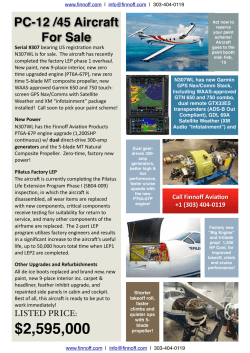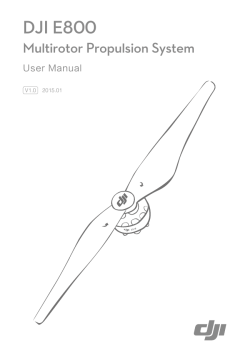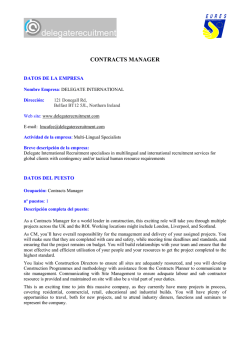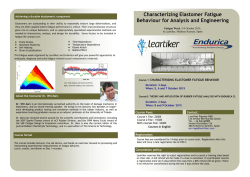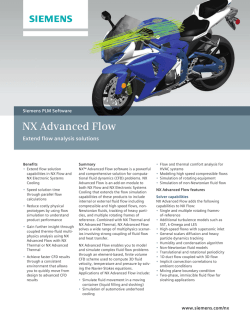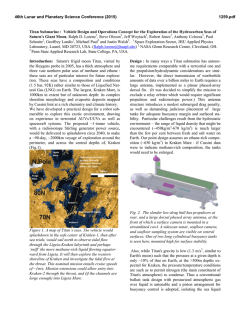
Scale Effects on Rudder Propeller Interaction
Scale Effects on Rudder Propeller Interaction Alejandro Caldas, Marcos Meis and Adrián Sarasquete from Vicus Desarrollos Tecnológicos, Vigo [email protected] [email protected] [email protected] The aim of this paper is to provide an investigation on two different lines related to rudder propeller interaction ; the first one upon the hydrodynamic effects due to the rudder propeller interaction in model scale and the second one a study about the scale effects that appears due to Rn. For the study a CPP and two different rudder geometries were employed. Towing tank results and CFD calculations have been compared in model scale. The mathematical model employed is based on the Reynolds Averaged Navier Stokes Equations solved using a Finite Volume method. Also different approximations for the propeller rotation model were employed in order to establish which one introduces less error. For the full scale study, in order to establish discrepancies, CFD results and different Towing Tank extrapolation methods have been compared. Ultimately this study aims to bring some light on the effect that energy recovery devices, such as the rudder, have upon the propulsion performance and the effect that Rn have upon them. Intro Descripción geométrica y física Descripción casos Descripción métodos numéricos y modelos matemáticos Escala Modelo Escala Buque Análisis de convergencia espacial Análisis de discretización temporal. Disquisición entre las diferentes aproximaciones Comparación con datos experimentales y distintas extrapolaciones Visualización de magnitudes Vorticidad Velocidades medias aguas abajo y arriba (integradas y circunferenciales) Plots de escalares aguas abajo y arriba Localización y visualización de vórtices Full scale calculations Original rudder MRF 0º Estudio convergencia 45º RBM Courant 1 Courant 2 Full scale calculations Modiffied rudder MRF RBM Bibliography [1]Carlton, J. Marine propellers and Propulsion. 2nd Edition. Butterworth-Heinemann 2007 [2]Sánchez Caja, A., Pylkkänen, J. V. and Spilä, Tuomas P. Simulation of the incompressible Viscous Flow around Ducted Propellers with Rudders Using a RANSE Solver. 27th Symposium on Naval Hydrodynamics Seoul, Korea, 5-10 October 2008 [3]Ferziger, J.H., Perić, M. Computational Methods for fluid dynamics. Springer. 2000 [4] Harvald, SV.AA., Resistance and Propulsion of Ships, Krieger Publishing Company, Malabar, Florida, 1991 [5] ITTC- Recommended Procedures and Guidelines - CFD General Uncertainty Analysis in CFD Verification and Validation Methodology and Procedures [6] User guide STAR-CCM+ (Version 4.0.6) [ssss] Bertram, V (2000). Practical Ship Hydrodynamics. 2nd ed. Woburn: Butterworth-Heinemann Caldas, A., Meis, M., Sarasquete, A. (2010) CFD validation of different propeller ducts on Open Water condition. 13th Numerical Towing Tank Symposium, Germany. Ferziger, J.H. & Peric, M. (2002). Computational Methods for Fluid Dynamics. 3rd ed. Springer-Verlag Berlin Heidelberg. Reichel, M. (2009) Influence of rudder location on propulsive chracteristics of a single screw container ship. First International Symposium on Marine Propulsors, Trondheim, Norwey. Sánchez-Caja,A., Sipilä, T.P. & Pylkkänen, J.V. (2009) Simulation of viscous flow around a ducted propeller with rudder using different RANS-based approaches. First International Symposium on Marine Propulsors, Trondheim, Norwey. STAR CCM + User Guide (Version 4.0.6) (2009) Ming Jian, Raghu Machiraju, David Thompson Detection and visualization of vortices "The visualization Handbook"
© Copyright 2025
